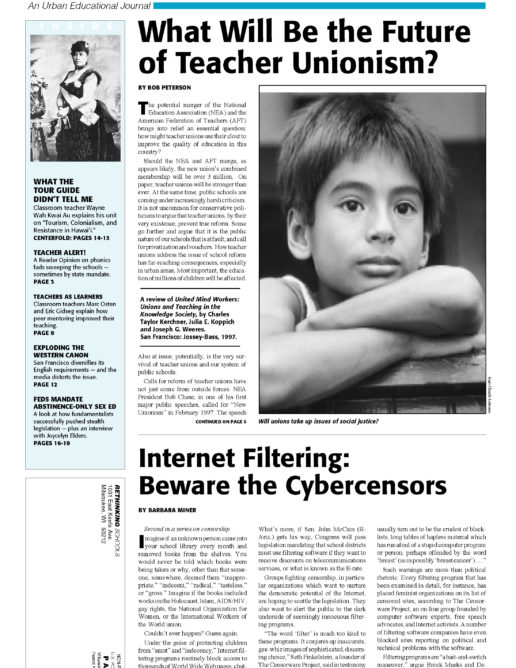Preview of Article:
Where’s the R-Word? Speaking Out on Textbook Silences
The issue involves more than acknowledging the stain of racism on our country’s past. By omitting the “r” word, texts help to obscure racism’s relationship to economic exploitation — whether in the case of slavery, the theft of Indian and Mexican land, the underpayment and mistreatment of Chinese railroad workers in the mid-19th century, or the use of Third World sweatshop workers today. Furthermore, if textbooks and educators can’t even discuss past racism, it makes it incredibly difficult to examine current problems of racism. Finally, when texts don’t talk about racism, they automatically eliminate any discussion of anti-racism. As a result, kids rarely learn of moments in U.S. history when people worked across racial lines for equality — as in the Black/Indian unity in the Seminole Wars and Black/white collaboration in the abolitionist and civil rights movements.
Whites have a particular responsibility to combat racism and yet few kids know of whites in U.S. history who have dedicated their lives to such a struggle: abolitionists such as John Brown, William Lloyd Garrison, Wendell Phillips, Prudence Crandall, Theodore Weld, Lydia Maria Child, Lucretia Mott, and Elijah Lovejoy, or civil rights leaders such as Anne Braden, Father Groppi, and Myles Horton.
As we approach a new century, it’s worth recalling the words of historian W.E.B. Du Bois nearly 100 years ago: “The problem of the 20th century is the problem of the color line.” If educators continue to ignore the issue of race, Du Bois’ prophetic words will ring as true for the upcoming century as they have for the past.

